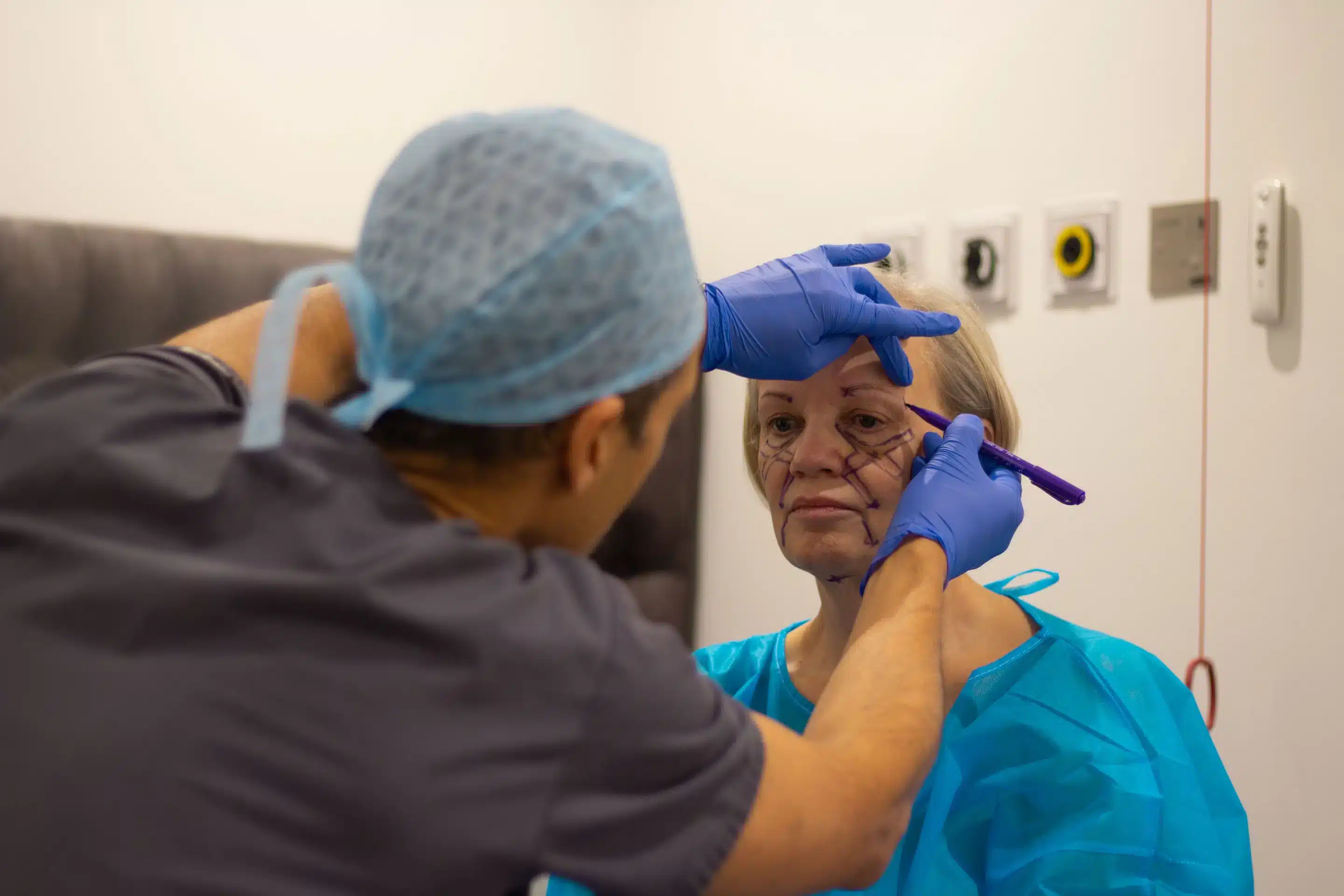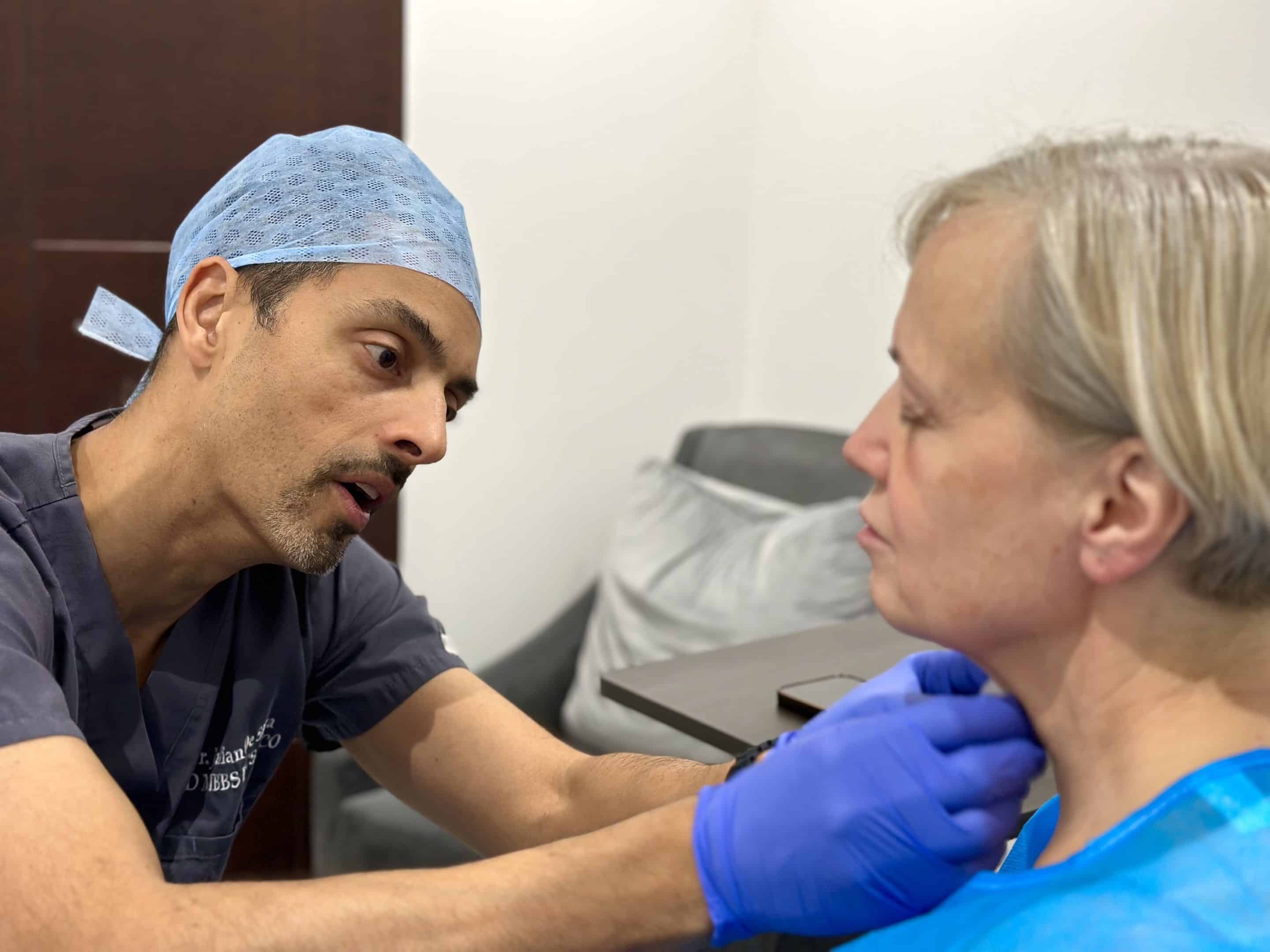Simply put, a lower facelift focuses on the bottom section of the face.
Facelifts or rhytidectomy have been solving several issues for millions of people all over the world. Lower facelift, a type of facelift, does the same.
But what exactly does a lower facelift do? What are its advantages? How about its disadvantages?
In this article, we will talk about how a lower facelift works, its pros, its cons, and its risks. I will also walk you through the entire lower facelift process.
Lower Facelift Defined
A lower facelift Uk is less invasive than traditional, full facelifts.
So what is a facelift on the lower side of your face?
Compared to a full facelift, a lower facelift is less invasive. This helps minimise pain, side effects, and scarring.
Only board-certified surgeons can perform lower facelifts. Surgeons work on lower facelifts by creating a small easily-concealable incision. It’s done under anaesthesia.
Your mouth’s corners can also be raised during the procedure. This gives you a more natural well-rested and happier appearance.
Most of the patients prefer to go back to work at least a week or two after their lower facelift procedure. However, complete recovery from the procedure could take several weeks.
Advantages of a Lower Facelift
A lower facelift has many advantages including boosting your confidence.
Here are the pros of getting a lower facelift:
1. A lower facelift tightens your facial muscles.
With time, muscles from the underlying structure of your face become weak. They also sag over a course of time.
These muscles can be tightened with a lower face lift. Other than the muscles, a lower facelift can also fix loose skin.
2. A lower facelift improves facial contours.
The procedure produces a more attractive, prominent jawline contour. This can be achieved by eliminating jowls.
Smoothing the area of the neck also helps. Additionally, a procedure to reduce soft tissues including fat and tightening the neck muscle can be carried out around the neck or jowls.
3. A lower facelift produces permanent results.
Unlike non-surgical facelifts, a surgical lower facelift produces permanent results. This means that you can enjoy the results of the procedure for decades or up to a lifetime.
My patients often enjoy the results for several years. Some of them enjoy the results for a lifetime.
4. A lower facelift boosts your confidence.
Undergoing a lower facelift can increase your confidence. Receiving the procedure also gives you a more positive outlook on life.
When you have a more youthful appearance, people may start to look at you differently. Thus, you become more confident of yourself and your capabilities.
5. A lower facelift works well with other procedures.
A lot of patients choose to have other procedures done at the time of their facelifts. Doing this can improve the overall results of the combined procedures.
Other procedures that can be done with a lower facelift include blepharoplasty or eye lift, cheek implants, and neck lift.
Disadvantages of a Lower Facelift
A lower facelift has disadvantages including its cost.
Here are the cons of getting a lower face lift:
Surgical Risks
You must carefully consider the risk of complications during and after the surgery before getting a lower facelift UK.
Risks of complications depend on the skill and the technique that the surgeon uses. I use techniques that put any risk to a minimum.
Recovery Time
A longer recovery period can be associated with surgical facelifts compared to their non-surgical counterparts.
The initial recovery period for the procedure can take about two weeks. Usually, normal activities can be resumed 10 to 14 days after the surgery. You might need to delay your return to work if your work involves rigorous or strenuous activities.
In addition, you must hold off on exercise for about four weeks after the surgery. These include other vigorous activities as well.
Cost
Surgical lower facelifts are becoming more affordable. However, a lower facelift cost in the UK remains more expensive than their non-surgical counterparts.
On the bright side, the results of a surgical lower face lift last longer and delivers permanent results, as opposed to non-surgical facelifts that deliver temporary results.
What Happens Before a Lower Facelift
You must have an extensive consultation before getting a lower facelift.
Before undergoing any type of procedure, you should heed any advice or recommendation from a doctor. You can book a consultation with me to see if you’re an ideal candidate.
Once you agree with everything we discussed, you can go ahead and schedule the operation.
If you’re smoking, you must stop doing so before the procedure. Doing this makes you recover better. I might also advise you to stop taking certain medications for a certain period of time before the surgery.
What Happens During a Lower Facelift
A lower facelift usually takes more than two hours.
During a lower facelift, incisions at the temple by your hairline will be made. The cuts or incisions will continue around and behind your ear. The incisions allow access to the muscles and tissues underneath your skin.
The procedure for a lower facelift UK can take more than two hours. However, this will still depend on your personal circumstances. After the procedure, the incisions will be closed through stitching. Once done, your face will be bandaged.
What Happens After a Lower Facelift
You will experience swelling and bruising after getting a lower facelift.
You will experience some discomfort after the procedure. However, the feeling of tenderness can be relieved by medication.
After two days, bruising and swelling will be at their worst. They might also continue to persist for a few days. Typically, it takes around two to four weeks to recover from a lower facelift UK procedure.
You must also follow the aftercare advice given to you. Other than speeding up the healing process, aftercare lets you get the best possible results as well.
To help extend the youthful appearance of your skin, you should avoid smoking, limit your alcohol intake, stress, sun exposure, and contact with pollutants. These habits also help maintain the results of your lower facelift surgery.
Risks of a Lower Facelift
A lower facelift involves risks such as swelling and bruising.
Here are the risks of a lower face lift:
Bruising
Blood will collect near the skin’s surface. These came from damaged blood cells deep beneath the skin. As a result, you will see some bruises after the procedure.
Swelling
Collection of body fluid can also cause swelling. However, just like bruising, swelling is a normal response to surgical procedures like lower facelift surgery.
Scarring
Scars acquired from incisions made during your facelift UK procedure. However, these scars can typically be concealed by the hairline and the natural contours of your ear.
Sensitivity
Nerves within the skin can sometimes become overly sensitive after an operation. Stimulating the skin on that specific area of your body can feel unpleasant. These include touch or pressure.
Lower Facelift Expectations
A lower facelift produces a firmer and more contoured appearance.
The results for the lower face lift will almost immediately be noticeable. You can expect a smoother and tighter appearance. In addition, you might experience mild bruising and swelling after the operation.
On the other hand, your best results will start to show. A lower facelift procedure makes you younger by up to ten years.
Other procedures can also be performed with a lower facelift, including a nose job and neck lift. It’s cost-effective to combine treatments. It also gives you total rejuvenation in just one downtime.
Conclusion
Want to know more about what to consider before getting a facelift? Check out our post about everything you should consider before getting a facelift to know more about the treatment.
Are you looking for a board-certified facelift surgeon who has over 20 years of experience? Do you want your lower facelift to produce subtle and natural results? Book a consultation with me, Dr. Julian Del Silva, now!













